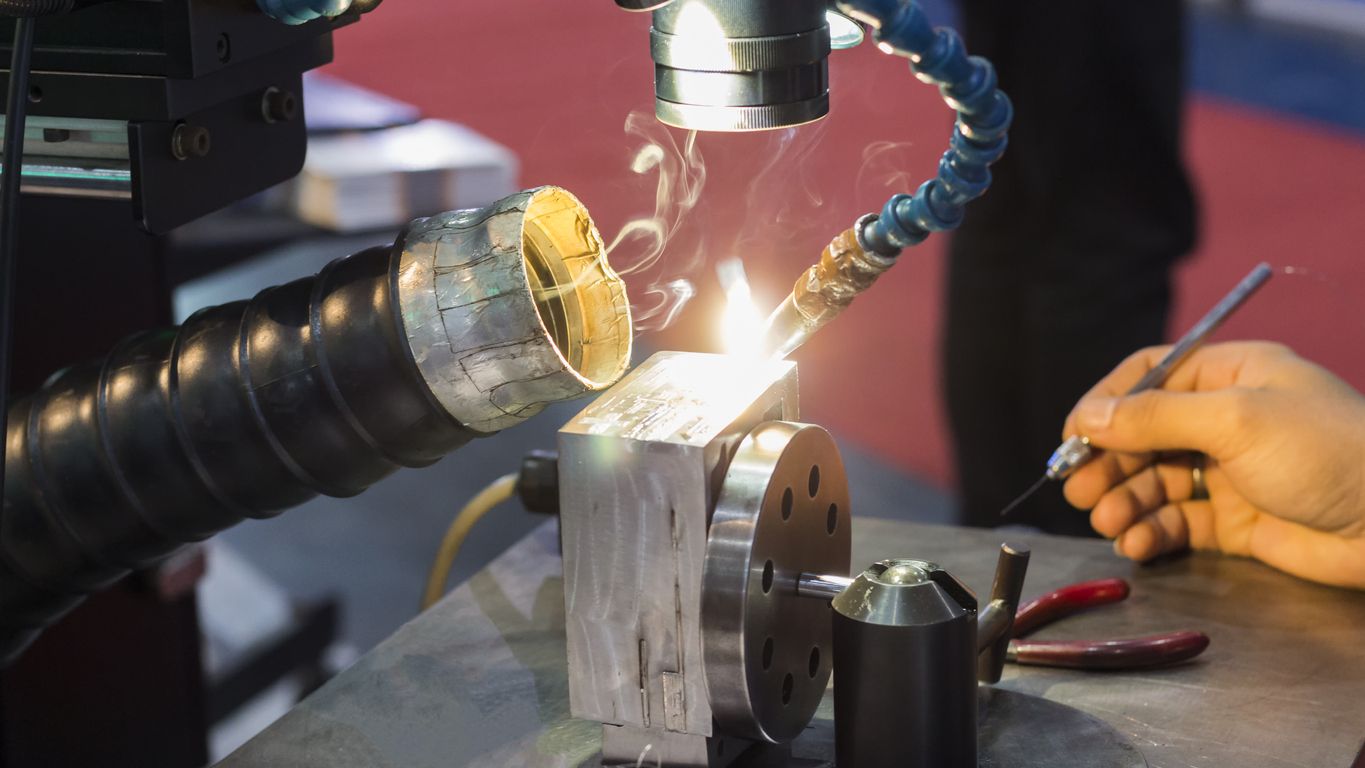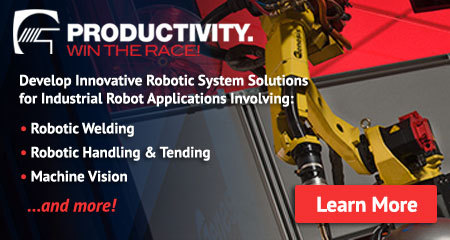How Does Robotic Laser Welding Work and What is it Used For?

Robotic laser welding has emerged as a highly productive automation solution over the past few years. It offers a number of advantages over traditional welding processes and can be used in completely different types of applications.
Robotic laser welding delivers precise and clean welds, whereas other methods of welding are more prone to inconsistencies and may leave inaccurate welds, even when paired with robotic automation technology. Laser welding is also more versatile, working with a wide range of metal thicknesses. It can be faster than traditional welding and has a significantly smaller heat-affected zone, minimizing distortion of parts during welding.
Given these advantages, how does robotic laser welding work? And what is it used for?
How Robotic Laser Welding Works
Robotic laser welding works slightly differently than traditional welding methods. There are two types of laser welding: heat conduction laser welding and deep laser welding. Heat conduction laser welding is used primarily for thin parts. In this process, energy gets into the workpiece through heat conduction. The materials melt at the point of the weld from this conducted heat and then quickly solidify, sealing the material.
Deep laser welding works by melting the material and creating a deep steam capillary, also known as a keyhole. This steam capillary moves with the laser as the weld is made, allowing the weld to reach deep into the material. The melted material solidifies behind the steam capillary and permanently seals the material.
What is Robotic Laser Welding Used For?
Robotic laser welding is used in applications that require clean and precise welding. The accuracy and low heat generation of laser welding make it ideal for welding thin or delicate materials without causing distortion or spatter. The manufacture of medical devices, for example, uses laser welding because there’s no material contact, no spatter, and a high degree of weld consistency.
Similarly, robotic laser welding is used in applications that have limited access to the part. Laser welding robots, unlike traditional welding robots, do not actually need to touch the part. Some laser welding robots can weld from over a foot away from the part. This makes accessing hard-to-reach areas much easier.
Robotic laser welding offers a number of benefits over traditional welding in certain applications, depending on the nature of the part. It’s an innovative way to weld metal materials and it’s been gaining popularity in a wide range of industries and applications.
To learn more, read about robotic laser welding integration solutions from Genesis Systems, an IPG Photonics Company. Genesis has been a recognized leader in robotic integration for decades and has extensive experience integrating productive laser welding systems.
Posted in Laser Welding

very nice… i really like your blog…